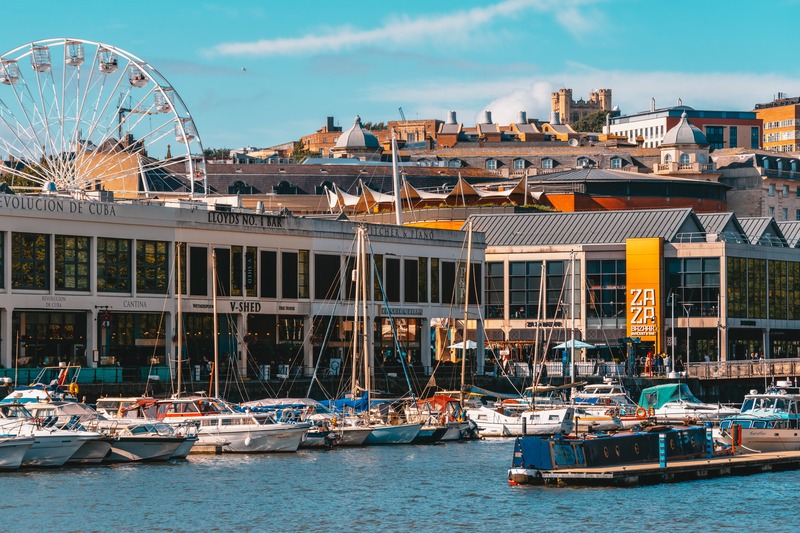A History of Bristol’s Housing Market

The city of Bristol is known for its eclectic mix of architectural styles. While parts of the city date back to medieval times, Bristol has been at the heart of industrial development for hundreds of years and has been through several periods of expansion, particularly following World War II when much of the central part of the city was bombed during the Bristol Blitz.
Let’s take a trip through the history of Bristol’s housing market.
The Early 1900s: The Push for Quality Social Housing
A great deal of expansion took place in the late 19th century Victorian era for the prosperous middle classes, with beautiful Grecian and Italianate villas constructed from Bath stone built in areas including Clifton Down.
Moves to construct social housing didn’t really occur until 1914, with most houses in the city constructed and owned by wealthy individuals and families. The council did construct Wade Street Hostel in 1905, which, together with some 70 other tenement buildings, was used to house those who had been displaced by road improvement schemes in the city. Today, the only surviving tenement building can be seen on Mina Road, St. Werburghs.
The Housing and Town Planning Act was introduced in 1919 following Prime Minister Lloyd George’s commitment to ‘build homes for heroes’ to recognise the sacrifices that people had made during World War I. It was at this time that Tudor Walter Standards were devised, which stated that houses for families should include three bedrooms, an indoor kitchen, an indoor bathroom, and plenty of natural light.
The notion that councils should construct quality housing for working people was revolutionary and the city of Bristol was one of the first in the UK to put these new frameworks into practice. As such, five village suburbs were created following the purchase of 700 acres of land and the first to be completed were Knowle, Sea Mills, Shirehampton, and Fishponds, which is now known as Hillfields. Notably, in the 1980s, Sea Mills became one of the UK’s first council estates to be named as a conservation area.
The Post World War II Social Housing Boom Saw Quality Reduce
The Hartcliffe area of Bristol was once slated to be called New Dundry, with houses built alongside a brand new cinema, shops, cricket pavilion and a swimming pool. However, in the early 1950s, the plans were seemingly revised and many of the additional features that were once included mysteriously disappeared. Some seventy years later and the lack of facilities in the area is still proving to be a central issue amongst residents, who lament the unreliable bus service and isolation from the city of Bristol itself.
Additionally, a coalition of Conservatives and Liberals who called themselves the Citizen Party took control of the city council around the same time and reduced the quality of the new housing that was being constructed to save money.
In many ways, the Hartcliffe area still feels the impact of these cost-cutting decisions, as houses built here were smaller and made from concrete rather than the sought-after red brick properties that had been built in the likes of Knowle, Bedminster, Southmead and Knowle West during the 1930s. Many properties in Hartcliffe experienced a range of issues with damp and have been clad or built around as they were difficult to keep warm.
Although large parts of inner city Bristol were destroyed during the war, many more Bristol properties were destroyed by city planners. Many of the residents who moved into the Hartcliffe area came from areas such as St Phillips in central Bristol. Streets in St Phillips were comprised of low-quality housing, which were almost exclusively knocked down by a council that wanted the area clear to construct dual carriageways and industrial estates.
The 1980s: Right To Buy
By the 1980s, council house construction had been underway for 60 years. While Bristol council did have plans to continue building to meet the ongoing demand, the Conservative government decided that local authorities should enable people to own their homes rather than continue to provide housing services. As a result, more than 5,000 people applied to purchase their homes and 50% of all council properties in the city were sold.
The Bristol Property Market Today
Today, Bristol is facing another housing shortage. However more than 130 council properties were built between 2015 and 2019, and there are many opportunities to create resilient communities who have easy access to the facilities they need. Notably, Bristol is an ideal location for everyone who wants to invest in property right now because it boasts a buoyant economy and continues to benefit from being a popular University city.
A number of sites across the city have already been developed, including Chalks Road, Ashton Rise, and ZedPods, with many more providing plenty of potential for the future. Excitingly, mixed-use developments are also infusing the city of Bristol with a new lease of life, including Natwest Court, Broad Street which is a site that spans 140,000 square feet and has been developed to retain the facade of the Grade II listed Art Nouveau structure that once housed Everard’s Printing Works.
